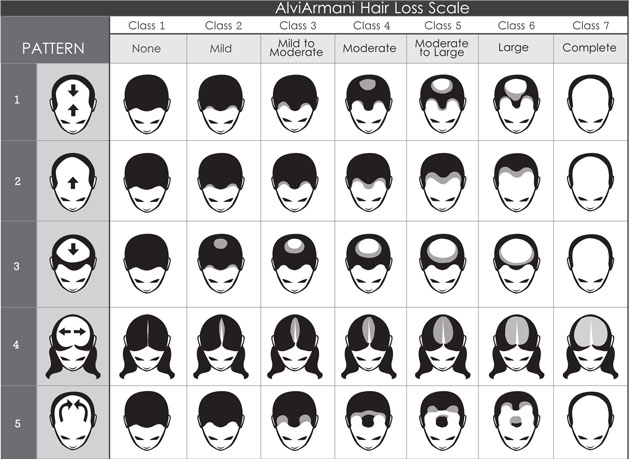How Many Grafts Do You Need for a Full Hair Transplant?
Updated with the AlviArmani Graft Range Matrix, Hair Loss Scale, and 2024 case data.
When considering hair transplant surgery, one of the first questions patients ask is: “How many grafts do I need?” The answer depends on your level of hair loss, hair type, and the artistry of your hair transplant surgeon in creating a natural, balanced hairline.
At AlviArmani, we go beyond numbers. Using our proprietary Vitruvian FUE™ and Ampligraf™ systems, every hair restoration procedure is designed for natural proportion, precision density, and lifelong harmony — not just numbers.
Plan by Zone, Not Just Graft Count
Visible zones (1→4) are prioritized for natural design and balanced density.
What Is a Hair Graft?
A hair graft is a small group of healthy hair follicles (typically 1–4 hairs). During follicular unit extraction (FUE), these follicles are individually harvested from the donor hair region — usually the back of the head or sides of the head — and placed into the thinning recipient area. Each graft represents a follicular unit, the biological foundation of new hair growth.
For an in-depth overview, visit: What Is a Hair Graft?
Understanding the AlviArmani Hair Loss Scale
To determine the number of grafts required, our team references the AlviArmani Hair Loss Scale, a modernized Norwood-based chart integrating graft counts with aesthetic zones and head size adjustments.

AlviArmani Graft Range Index (Zones × Hat Size)
| Zone | Area Description | Small Head (≤ 6¾) | Medium Head (7–7¼) | Large Head (≥ 7½) |
|---|---|---|---|---|
| Zone 1 — Hairline | Framing and temple peaks | 600–900 | 800–1,100 | 1,000–1,300 |
| Zone 2 — Frontal Third | Extends behind the hairline | 1,000–1,600 | 1,300–2,000 | 1,800–2,400 |
| Zone 3 — Mid-Scalp | Central coverage region | 1,200–1,800 | 1,500–2,300 | 2,000–2,800 |
| Zone 4 — Crown | Vertex swirl area | 1,200–1,700 | 1,500–2,200 | 2,000–2,700 |
Example: A patient with moderate loss in Zones 1–3 and a medium head size would typically need 3,500–5,000 grafts for complete front-to-mid coverage. Larger heads or advanced loss including the crown may require 5,500–6,500 grafts.
Estimate Your Graft Range (Interactive)
AlviArmani Graft Calculator™
Select your hat size and zone(s) of concern to see an estimated graft range.
Real-World Data: 2024 Case Insights
According to the 2024 FUE Hair Transplant Statistics: AlviArmani Case Analysis:
- Average graft survival: >95% using Ampligraf™ preservation.
- Average density: 38–42 grafts/cm², depending on hair type and design zone.
- One-session restoration: Achieved in >70% of cases.
These outcomes reflect precision planning, realistic graft numbers, and artistry in natural hairline design — the hallmarks of AlviArmani’s approach.
Why Graft Density Matters More Than Graft Count
Two patients may receive the same number of hair grafts yet achieve very different visual outcomes. Success lies in hair density, direction, and distribution across zones, not just totals. Using Vitruvian Design™, surgeons emphasize the front half of the scalp for visual impact, match native flow, and use single-hair vs multi-hair units intelligently to frame the face and build depth.
Quick Formula (For Context)
Area (cm²) × Desired density (grafts/cm²) = Approximate graft total
For example, a 100 cm² thinning area at 40 grafts/cm² ≈ 4,000 grafts. Your consultation refines this into a personalized treatment plan based on donor capacity, scalp elasticity, hair caliber, and your aesthetic goals.
Donor Supply and Lifetime Planning
The average male donor area yields 7,000–9,000 viable grafts, with many patients in the 10,000–12,000 range. In extraordinary cases, we’ve seen donor supply up to 18,000 grafts. We prioritize donor preservation, staged design when appropriate, and extraction patterns that maintain flexibility for the future.
Avoid “Cost per Graft” Comparisons
When assessing hair transplant cost, don’t fixate on per-graft rates. Two clinics may quote the same numbers but produce vastly different density and survival outcomes depending on handling, angle control, and artistic design. At AlviArmani, value is measured by density, aesthetics, and longevity — not volume alone.
